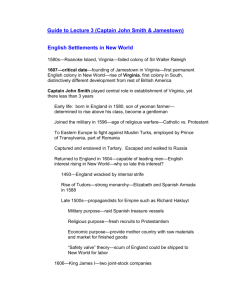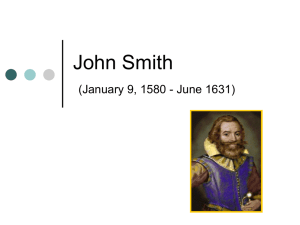2nd Grade EOY ELA Performance Task
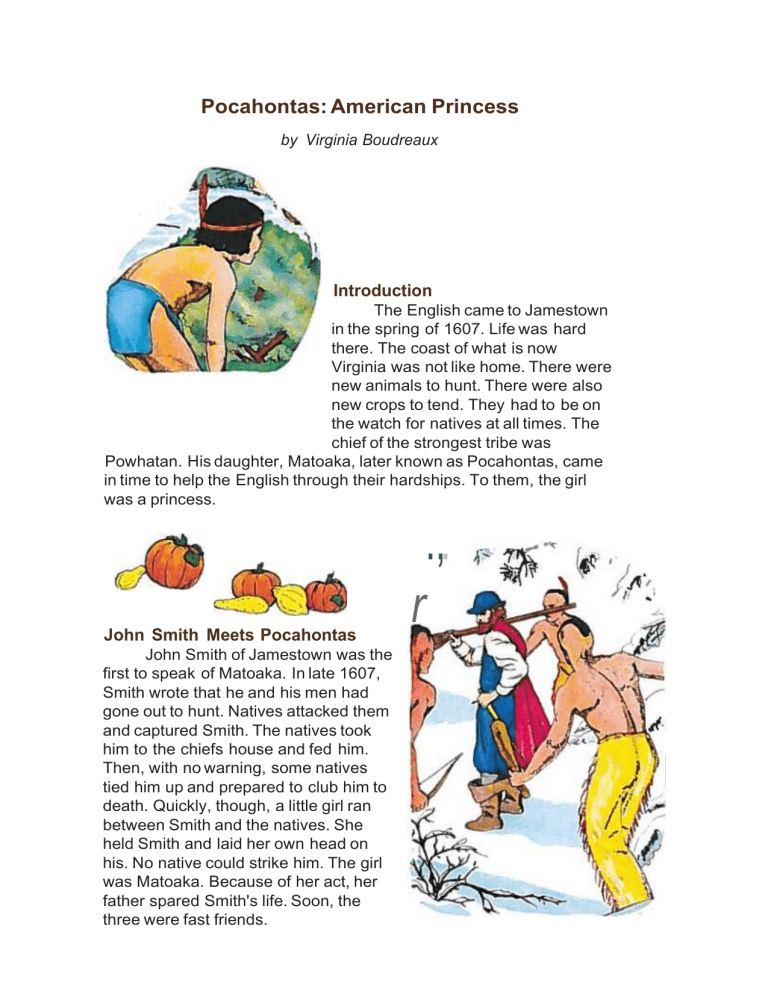
Pocahontas: American Princess
by Virginia Boudreaux
Introduction
The English came to Jamestown in the spring of 1607. Life was hard there. The coast of what is now
Virginia was not like home. There were new animals to hunt. There were also new crops to tend. They had to be on
Powhatan. His daughter, Matoaka, later known as Pocahontas, came in time to help the English through their hardships. To them, the girl was a princess.
the watch for natives at all times. The chief of the strongest tribe was
., .
John Smith Meets Pocahontas
John Smith of Jamestown was the first to speak of Matoaka. In late 1607,
Smith wrote that he and his men had gone out to hunt. Natives attacked them and captured Smith. The natives took him to the chiefs house and fed him.
Then, with no warning, some natives tied him up and prepared to club him to death. Quickly, though, a little girl ran between Smith and the natives. She held Smith and laid her own head on his. No native could strike him. The girl was Matoaka. Because of her act, her father spared Smith's life. Soon, the three were fast friends.
r
"Pocahontas: American Princess," by Virginia Boudreaux.
1
English and Native Relations
Other natives and Englishmen were soon friends as well. The girl visited often with food or notes from her father. She became known as
Pocahontas. The name, which meant playful little girl, fit well. As the English boys turned cartwheels through town, she followed and
"wheeled some herself ... all the fort over." To
John Smith, she had no match in "wit and spirit."
"V
The peace did not last. The English and natives began to argue. Pocahontas visited less and less. Then, in late 1609, John Smith was hurt. He had to sail home. When Pocahontas asked about him, though, the English lied. They told her Smith was dead. Thinking this,
Pocahontas married a native named Kocoum. It seemed that her time with the English was over.
It was not to be.
Soon things got worse.
The English said that Powhatan, the chief, held some of their men prisoner. They also said that natives had stolen some of their weapons. So the English took Pocahontas hostage. Then they told the chief to give back their men and weapons. They asked for corn as well. The chief sent some of this, but not all, and the girl was not set free.
A New
Way
of Life
At first, Pocahontas was sad, but that did not last. Although she was a prisoner, she could explore the town as she wished. She soon learned to like her new life. Before long, she met a farmer named
John Rolfe. She then took a new name, Rebecca, and married Rolfe the next year. As a result, peace took hold once more between the natives and the English.
NPocahontas: American Princess," by Virginia Boudreaux.
2
Pocahontas in England
In 1616, Pocahontas went to England with John Rolfe and their new son, Thomas.
One of their goals was to get money for the settlers. The other was to let all of England, including King James I, see the American princess. Fate smiled on the trip.
Pocahontas saw John Smith again while in
London. Smith wrote that they spoke of old times. She told him that she would be "for ever and ever" his countryman. Figure 1: Crossing the Atlantic.
In March 1617, as she prepared to return to America,
Pocahontas became ill. She soon died. She was only 22 years old.
But her descendents live on through her son, Thomas. Her name also lives on through tales about those she helped in their time of need.
Smith once wrote that she was the one who saved "this colony from death, famine, and utter confusion."
Name_____________________________________Date________________________
2nd Grade EOY ELA Performance Task
Read the article question(s).
Pocahontas: American Princess , and then answer the following
Circle the letter of the best answer(s).
1. Which came first in the article? a. b.
Pocahontas brought the settlers food.
John Smith got hurt and went back to England. c. d.
Pocahontas was taken hostage.
Pocahontas married the native Kocoum.
2. What other names did Pocahontas go by in her lifetime? a. Rebecca b. Playful c. Little One d. Matoaka
3. What is the main idea of the article?
Pocahontas was a good daughter to her father, Powhatan. a.
Thomas would one day let the world know about Pocahontas. b. c. d.
John Smith was needed to make Jamestown succeed.
Pocahontas learned about the English and helped them survive.
4. Using the illustration above as a guide, write the name of the ocean that the English
Settlers sailed across on their way to James Town.
___________________________________
5. Refer back to the story of Pocahontas and answer the following question.
If Pocahontas had not saved John Smith, what do you think would have happened to him? Support your answer with details from the story. Use complete sentences.
______________________________________________________________________
______________________________________________________________________
______________________________________________________________________
______________________________________________________________________
______________________________________________________________________
______________________________________________________________________
______________________________________________________________________
______________________________________________________________________
______________________________________________________________________
______________________________________________________________________
______________________________________________________________________
Answer Key
1. A (1 pt)
2. D & A (2pts possible) Do not mark off for incorrect answers.
3. D (1pt)
4. Atlantic Ocean (1 pt)
5. Rubric: Short constructed response
1pt Complete sentence(s)
1pt States an opinion
2pt Gives at least 1 logical reason from the text to support their opinion (because…)
1pt Correct punctuation
10 pts
5pts Total
Overall

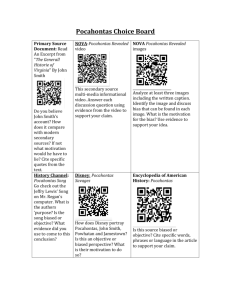
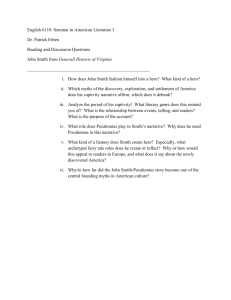
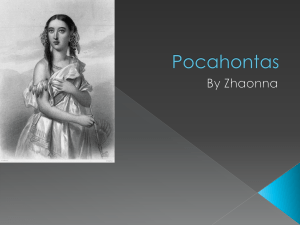
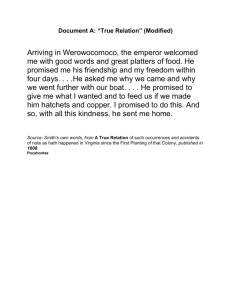
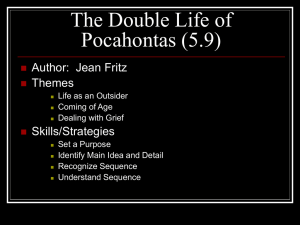
![Pocahontas[1]](http://s2.studylib.net/store/data/005414234_1-0751810fda8e30dfdada8c7a8b8da80e-300x300.png)
